Stir-fried cauliflower, a dish that marries simplicity with explosive flavor, has carved its place in kitchens across the globe. Rooted in Chinese culinary traditions, this humble vegetable transforms under high heat into a tender yet crisp delight, coated in a glossy sauce that tantalizes the taste buds. Beyond its delicious profile, stir-fried cauliflower embodies the philosophy of wok hei—the breath of the wok—a concept that elevates cooking to an art form. This article explores the history, techniques, and cultural significance of this beloved dish, offering insights into why it remains a staple on dinner tables and restaurant menus alike.
The Origins and Cultural Tapestry
The story of stir-fried cauliflower begins in China, where the wok became a symbol of home-cooked warmth and communal feasting. Cauliflower, introduced to Asia through trade routes, quickly adapted to local palates. Unlike its Western counterparts, which often feature the vegetable boiled or roasted, Chinese chefs embraced the wok’s searing heat to lock in nutrients and texture. The dish’s popularity spread to Southeast Asia, India, and beyond, with each region adding its twist—a splash of fish sauce in Thailand, a dash of turmeric in India, or a sprinkle of Parmesan in Italian-inspired fusions.
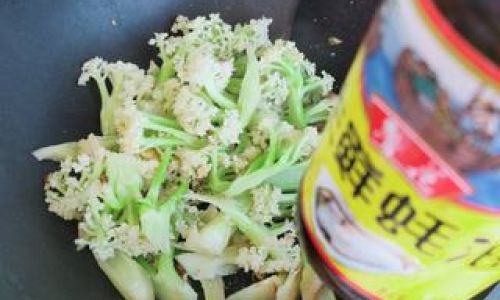
Stir-frying, or chao in Mandarin, is more than a cooking method; it’s a cultural ritual. The technique requires precision, patience, and an intuitive understanding of heat. Families pass down wok-handling skills, and the sound of sizzling garlic in oil evokes nostalgia for countless generations. For many, stir-fried cauliflower is not just a meal—it’s a bridge to heritage.
The Anatomy of Flavor: Ingredients That Elevate
At its core, stir-fried cauliflower relies on five pillars: the vegetable itself, aromatic bases, heat elements, umami boosters, and textural contrasts.
The Star: Cauliflower
Selecting the right cauliflower is crucial. Look for firm, cream-colored florets with tightly closed buds. Avoid specimens with brown spots or wilting leaves. Some chefs prefer to soak the florets in salted water to expel insects, though modern farming practices have reduced this necessity.
Aromatics: The Fragrant Foundation
Garlic and ginger form the dish’s backbone. Minced garlic, sautéed until golden, releases a pungent sweetness, while fresh ginger imparts a warm, citrusy kick. Scallions, both white and green parts, add a mild oniony note, with the white segments fried first for depth and the green sprinkled at the end for freshness.
Heat: Balancing Spice
Dried red chilies or fresh bird’s-eye chilies introduce controlled fire. The key is to infuse oil with their essence without overwhelming the dish. For those sensitive to heat, a pinch of chili flakes or a spoonful of Sriracha added post-cooking offers a milder alternative.
Umami: The Savory Depth
Soy sauce, oyster sauce, or a touch of hoisin sauce provides the dish’s signature savory backbone. Light soy sauce contributes saltiness and color, while dark soy adds a caramel-rich hue. Vegetarian variants might substitute mushroom-based sauces, ensuring the dish remains accessible to all diets.
Textural Contrasts
A sprinkle of toasted sesame seeds, a handful of crispy fried shallots, or a garnish of cilantro leaves elevates the dish from mundane to memorable. Some recipes incorporate water chestnuts or bell peppers for added crunch, though purists argue that simplicity honors the cauliflower’s natural charm.
The Alchemy of Cooking: Techniques for Perfection
Mastering stir-fried cauliflower demands respect for the wok and its heat. Here’s a breakdown of the process:
Preparation: The Devil Is in the Details
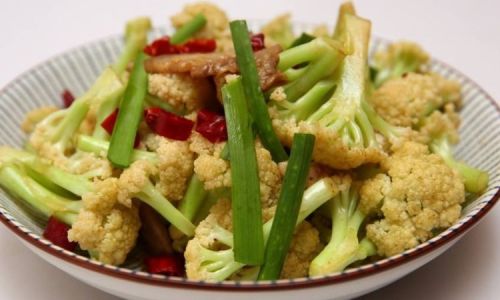
- Cutting the Cauliflower: Separate the florets into uniform, bite-sized pieces. Larger chunks retain moisture during cooking, preventing sogginess.
- Blanching (Optional): Some recipes call for a quick parboil to soften the cauliflower before stir-frying. However, this step is often skipped to preserve the vegetable’s crispness.
- Marinating (For Bold Flavors): A light toss in cornstarch and soy sauce can create a velvety coating, though traditionalists prefer to let the sauce cling naturally.
The Wok: Your Culinary Orchestra
- Heat Control: Preheat the wok until smoking hot. A drop of water should evaporate instantly. This high heat ensures the cauliflower sears rather than steams.
- Oil Selection: Use a neutral oil with a high smoke point, such as peanut or canola. A tablespoon is sufficient; excess oil weighs down the dish.
- The Dance of Ingredients: Add aromatics first, stirring constantly to prevent burning. Toss in the cauliflower, using a spatula to toss and flip the florets continuously. The goal is to char the edges slightly while maintaining a firm interior.
Sauce Application: The Final Flourish
Combine soy sauce, oyster sauce, a pinch of sugar, and a splash of rice wine in a small bowl. Pour the mixture evenly over the cauliflower, tossing vigorously to coat. The sauce should reduce quickly, clinging to the florets like a glossy glaze.
Finishing Touches: Elevating the Dish
A final drizzle of sesame oil, a sprinkle of white pepper, or a handful of chopped cilantro adds polish. Serve immediately, as the dish’s appeal lies in its contrast between crispy edges and tender centers.
Health Benefits: Nutrition Meets Nourishment
Stir-fried cauliflower is a nutritional powerhouse. A single cup provides:
- 77% of the Daily Value (DV) for Vitamin C: Boosts immunity and skin health.
- 20% DV for Vitamin K: Essential for bone health and blood clotting.
- 11% DV for Folate: Critical for cell repair and fetal development.
Moreover, cauliflower’s high fiber content aids digestion, while its low calorie count makes it a diet-friendly choice. Stir-frying, unlike boiling, retains most nutrients, as the rapid cooking minimizes leaching into water.
Regional Variations: A World of Possibilities
The beauty of stir-fried cauliflower lies in its adaptability. Here’s how different cultures embrace the dish:
Sichuan-Style: Fiery and Numbing
Sichuan peppercorns and doubanjiang (chili bean paste) create a麻辣 (má là) sensation—tingling heat paired with pungent spice.
Cantonese-Inspired: Delicate and Balanced
Light soy sauce, a touch of sugar, and a garnish of fried garlic chips highlight the cauliflower’s natural sweetness.
Indian-Spiced: Aromatic and Bold
Turmeric, cumin, and mustard seeds infuse the dish with earthy warmth, often paired with diced tomatoes and fresh cilantro.
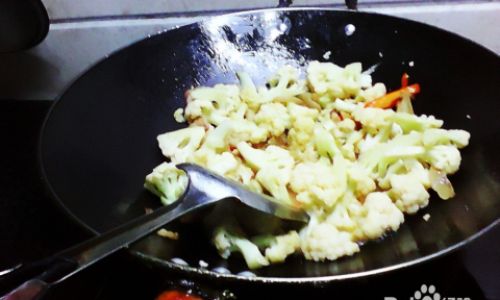
Modern Fusion: Global Twists
Chefs today experiment with gochujang (Korean fermented chili paste), miso, or even a drizzle of balsamic glaze for unexpected depth.
Troubleshooting: Common Pitfalls and Solutions
Even seasoned cooks face hurdles. Here’s how to avoid them:
Soggy Cauliflower
- Cause: Overcrowding the wok or low heat.
- Fix: Cook in batches to maintain high heat. Use a slotted spoon to remove florets as they sear.
Bland Flavor
- Cause: Under-seasoning or uneven sauce distribution.
- Fix: Taste and adjust seasoning mid-cook. Ensure the sauce is well-mixed before adding.
Burnt Aromatics
- Cause: High heat without constant stirring.
- Fix: Lower the flame slightly when sautéing garlic and ginger.
Beyond the Plate: Stir-Fried Cauliflower in Popular Culture
This dish has transcended kitchens to appear in literature, film, and social media. In The Joy Luck Club, Amy Tan uses stir-fried cauliflower to symbolize the blending of cultures. Food bloggers rave about its “crispy-tender perfection” on Instagram, while TikTok chefs showcase viral hacks, like adding a splash of orange juice for acidity.
Conclusion: The Enduring Appeal of Stir-Fried Cauliflower
Stir-fried cauliflower is more than a meal—it’s a testament to human ingenuity. From the streets of Beijing to suburban American homes, it bridges culinary traditions, offering comfort, nutrition, and joy. Whether spiced, sauced, or simply stir-fried, this dish reminds us that even the simplest ingredients can shine when treated with care, heat, and a dash of creativity. So next time you hear the sizzle of a wok, remember: you’re not just cooking a vegetable—you’re crafting a legacy.

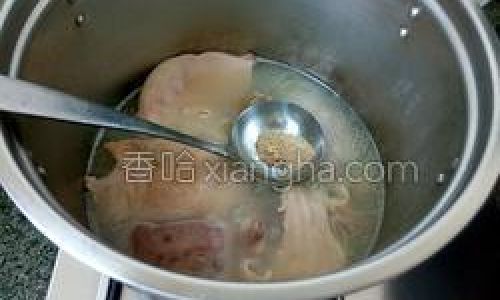
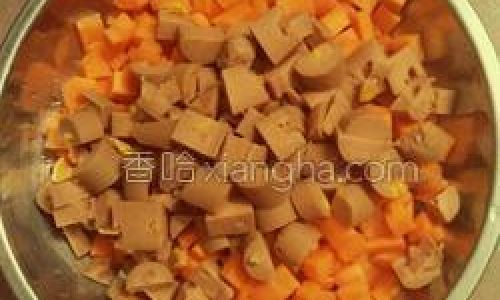


0 comments